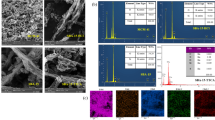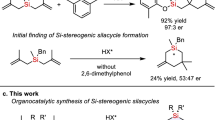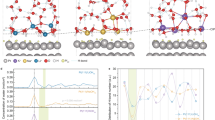Abstract
THE importance of this subject in chemistry and pedology is my excuse for a further letter in reply to that of Prof. Mukherjee in NATURE of October 9. I could wish that he had told us more as to the method by which he demonstrates primary adsorption, as until it is established—and this is the point of disagreement between us—it is scarcely worth while discussing its mechanism. I have now tried so many variations of the experiment in attempting without success to obtain Prof. Mukherjee's results, that I am a little discouraged, and this the more because the magnitude of the effects described in successive communications has been greatly reduced. Thus the early statement that considerable quantities of acids could be adsorbed by silica was modified by his letter in NATURE (January 31, 1925) stating that the silica used contained alkali. Again, in the issue of April 4, 1925, it was stated that 10 grams silica adsorbed 42 c.c. of decinormal hydrochloric acid, i.e. 250 × 104 gram molecules of acid per gram molecule of silica. But in the letter under reply, this 250 has been reduced to 1.
This is a preview of subscription content, access via your institution
Access options
Subscribe to this journal
Receive 51 print issues and online access
$199.00 per year
only $3.90 per issue
Buy this article
- Purchase on SpringerLink
- Instant access to full article PDF
Prices may be subject to local taxes which are calculated during checkout
Similar content being viewed by others
Author information
Authors and Affiliations
Rights and permissions
About this article
Cite this article
JOSEPH, A. The Action of Silica on Electrolytes. Nature 118, 878 (1926). https://doi.org/10.1038/118878a0
Issue date:
DOI: https://doi.org/10.1038/118878a0



